AP PSYCHOLOGY UNIT 4 FLASHCARDS
0.0(0)
Card Sorting
1/71
Earn XP
Description and Tags
Study Analytics
Name | Mastery | Learn | Test | Matching | Spaced |
|---|
No study sessions yet.
72 Terms
1
New cards
Sensation
The process by which our sensory receptors (like touch, taste, smell, see hear) receive stimuli from our environment
2
New cards
Perception
The process of organizing sensory information
\
* Enables us to find meaning in objects and events (essentially how we FEEL about it)
\
* Enables us to find meaning in objects and events (essentially how we FEEL about it)
3
New cards
Sensation vs Perception Bonfire example
Sensation: heat, smell of smoke, light, taste of smores
\
Perception: Comfort/cozy, fear of getting burnt, beauty of the flame
\
(Both processes are happening at the same time)
\
Perception: Comfort/cozy, fear of getting burnt, beauty of the flame
\
(Both processes are happening at the same time)
4
New cards
Bottom-up processing
In the present
\
* Analysis begins with sensory receptors and works up to the brain
\
* Analysis begins with sensory receptors and works up to the brain
5
New cards
Top-down processing
Way more thoughtful
\
* Constructs perception from sensory input by drawing on experiences and expectations (it informs sensory then perception using background information)
\
* Constructs perception from sensory input by drawing on experiences and expectations (it informs sensory then perception using background information)
6
New cards
Selective Attention
Focus your attention on particular stimuli like a spotlight focusing on a small part of a larger experience
\
* The human brain - using all 5 senses - can take in all 11 million bits of information every second (however, it only processes 40 bits at a time, all other 10,999,960 are in the subcontinua brain)
\
* The human brain - using all 5 senses - can take in all 11 million bits of information every second (however, it only processes 40 bits at a time, all other 10,999,960 are in the subcontinua brain)
7
New cards
Cautions with selective attention
Things like texting and driving increase your chance of accident by 25 times, conversation in the car increases your chances of accident by 40 percent
8
New cards
Selective inattention
Failing to see visible objects when our attention is elsewhere
\
(Reference to experiments: Less than 50 percent of participants see the bear or gorilla when they are focusing on other things)
\
Selective inattention can be manipulated by humans for magic and pickpocketing, etc
\
(Reference to experiments: Less than 50 percent of participants see the bear or gorilla when they are focusing on other things)
\
Selective inattention can be manipulated by humans for magic and pickpocketing, etc
9
New cards
Change blindness
In the moment
\
* Failing to notice change in the environment
* What is different NOW from what was THEN
* Adaptive innovation to not miss bigger picture, minimizes perception so we can focus on the greater task
* An example is roofing someone
\
* Failing to notice change in the environment
* What is different NOW from what was THEN
* Adaptive innovation to not miss bigger picture, minimizes perception so we can focus on the greater task
* An example is roofing someone
10
New cards
Transduction STEPS
1\.) Receiving sensory information
2\.) Transform a neural impulse
3\.) Deliver Neuro-Signal to brain
2\.) Transform a neural impulse
3\.) Deliver Neuro-Signal to brain
11
New cards
Transduction
Converting one form of energy to another
ex.) Visual light to neural impulse
ex.) Visual light to neural impulse
12
New cards
Absolute threshhold
The minimum stimulation required to detect a particular stimuli 50 percent of the time
\
Ex.) The minimum taste, sound, light needed to taste, hear, see
\
Ex.) The minimum taste, sound, light needed to taste, hear, see
13
New cards
Signal detection theory
Our ability to detect weak stimuli depends on “real world contexts”
* When we detect a faint stimulus (signal) amid background stimulation (noise)
Ex.) Parents of new-born = missed calls = hear sounds of baby
* When we detect a faint stimulus (signal) amid background stimulation (noise)
Ex.) Parents of new-born = missed calls = hear sounds of baby
14
New cards
Difference threshold
The minimum change you can detect
* Stimuli you can detect 50 percent of the time.
\
Ex.) Have 10 ounces and add 1 ounce, you will notice
vs. Have 100 ounces and add 10 ounces, you won’t be able to tell
* Stimuli you can detect 50 percent of the time.
\
Ex.) Have 10 ounces and add 1 ounce, you will notice
vs. Have 100 ounces and add 10 ounces, you won’t be able to tell
15
New cards
Webers law
In order to notice a change between stimuli, those stimuli must differ by minimum percentages, NOT minimum amounts
\
* Changes in light are noticeable at 8 percent
* Changes in tone (hearing) are noticeable at 5 percent
\
* Changes in light are noticeable at 8 percent
* Changes in tone (hearing) are noticeable at 5 percent
16
New cards
Subliminal
Below your absolute threshold
* Research shows no impact of subliminal messaging
* Research shows no impact of subliminal messaging
17
New cards
Priming
To activate parts of your mind by affecting the subconscious brain
18
New cards
Sensory Adaptation
Diminished sensitivity as a consequence of stimulation.
\
* When you are constantly exposed to a stimulus that does not change, you become less aware of it
* Allows us to notice changes more effectively and avoid danger
\
* When you are constantly exposed to a stimulus that does not change, you become less aware of it
* Allows us to notice changes more effectively and avoid danger
19
New cards
Wavelength
The distance between the peak of a sound or lightwave and said waves valley

20
New cards
Hues
The dimension of color determined by the wave length of life
* Red, orange, yellow (warm tone colors) have wavelengths that are longer, lower energy (less dense in spacing)
* Green, blue, purple (cool tone colors) have wavelengths that are shorter, higher energy (more dense spacing)
* Red, orange, yellow (warm tone colors) have wavelengths that are longer, lower energy (less dense in spacing)
* Green, blue, purple (cool tone colors) have wavelengths that are shorter, higher energy (more dense spacing)
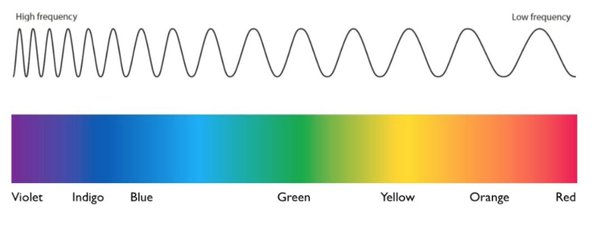
21
New cards
THE EYE
(reference worksheet for labels)
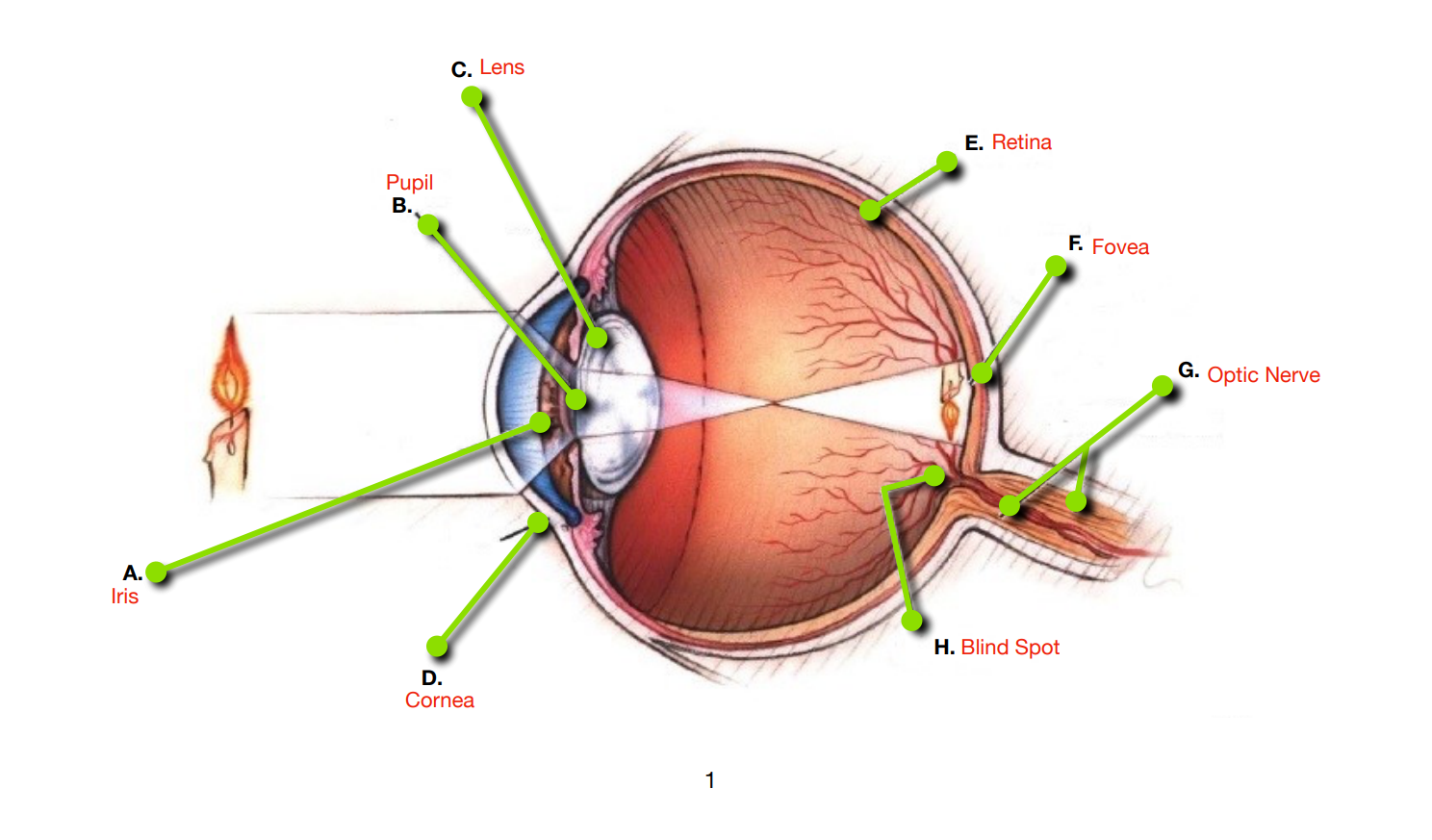
22
New cards
Cornea
A clear dome over the iris. The outside layer that protects the eye from damage
23
New cards
Pupil
The small black circular and adjustable opening in the iris that lets light in.
24
New cards
Iris
The colored muscle that controls the size of the pupil
25
New cards
Lens
Focuses incoming light rays into an image on the retina
(This is what controls near and farsightedness, and lasic eye surgery fixes this part of the eye)
(This is what controls near and farsightedness, and lasic eye surgery fixes this part of the eye)
26
New cards
Retina
The light sensitive inner surface of the (back of the) eye that processes visual information
27
New cards
Fovea
The central focus point in the retina that holds cone cells
28
New cards
Optic nerve
Carries neural information from eye to brain (connects to the visual cortex via the thalamus)
29
New cards
Blind spot
Where the optic nerve meets the eye (no visual receptors)
30
New cards
Cones and rods
Retinal receptors that take in visual information
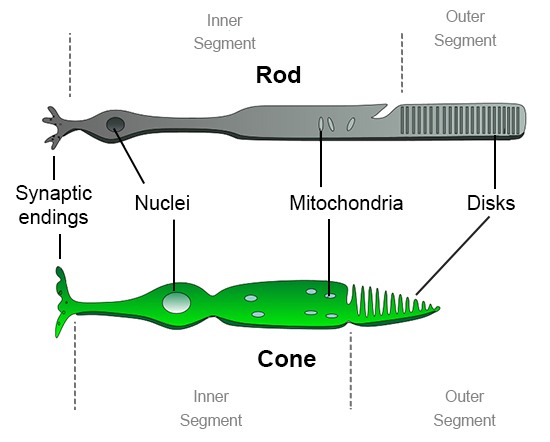
31
New cards
Cones
Are centered in the fovea
\
* 6 million of them
* They drive color sensations
* Function well in high light scenarios
* Detect fine detail
\
* 6 million of them
* They drive color sensations
* Function well in high light scenarios
* Detect fine detail
32
New cards
Rods
* 12 million of them
* They differentiate black and white
* Deal with peripheral vision and lowlight vision
\
* They differentiate black and white
* Deal with peripheral vision and lowlight vision
\
33
New cards
Visual information processing
1\. ) Visual information leaves the eye via the optic nerve
2\.) Goes to the thalamus (sorts information, then feature detection)
3\.) Sent to visual cortex
2\.) Goes to the thalamus (sorts information, then feature detection)
3\.) Sent to visual cortex
34
New cards
Feature Detection
Nerves in the occipital lobe (visual cortex) specialized in specific features like lines, angles, faces
35
New cards
Parallel Processing
Processing different aspects at the same time (color, form, motion, depth)
36
New cards
Steps to seeing ish
Scene, then retinal processing: Rods and cones to optic nerve, then feature detection: Thalamus sends into correct parts of visual cortex, then parallel processing: Visual cortex interprets image, then recognition: Based on memory and knowledge you understand what you’re saying
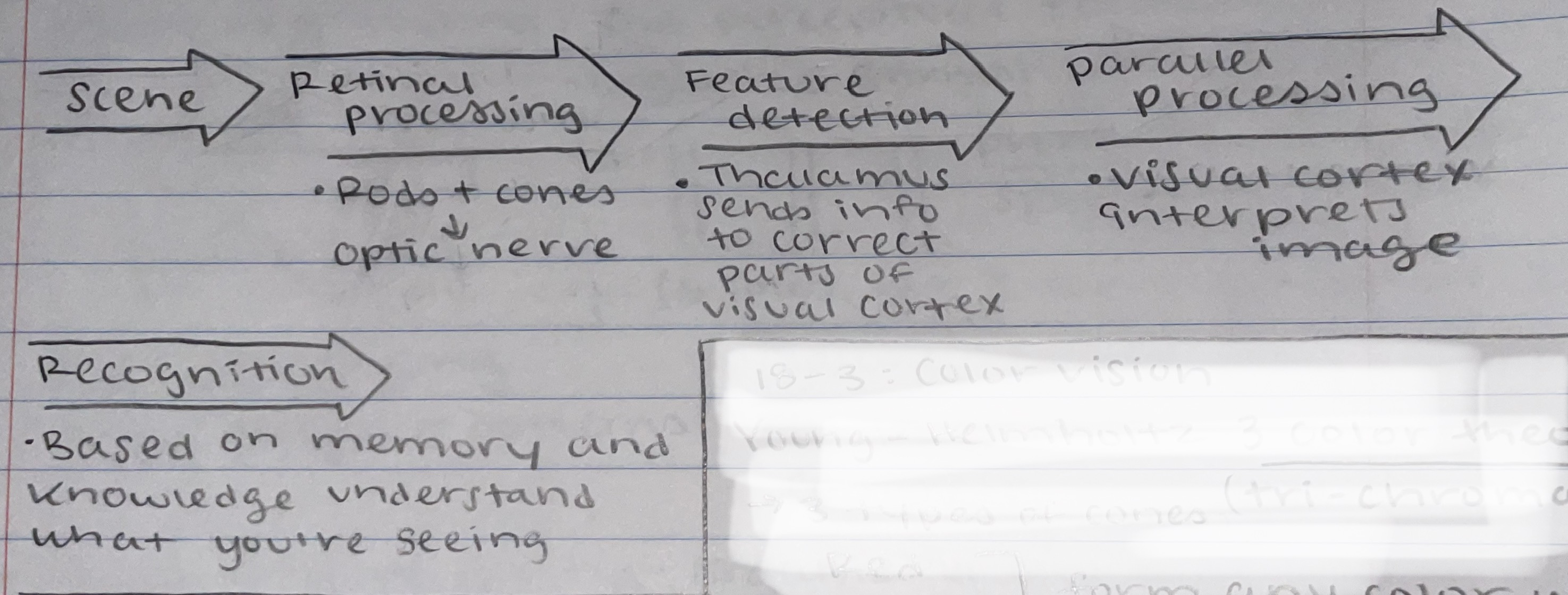
37
New cards
Color vision - Young Helmholtz 3 Color Theory (trichromatic)
3 types of cones
Red, Green, and Blue form any color we can see
Red, Green, and Blue form any color we can see
38
New cards
Color blindness
When green or red cones aren’t working
39
New cards
Opponent processing
The idea that color processing is accomplished by opposing color pairs
* Red and green
* Blue and yellow
* Black and white
The colors in one pair cannot fire at the same time to make a new color because they’re in the same channel
Red and green travel down the same channel, so we cannot see reddish-green
(blue and yellow cannot go off together to make green, green stands alone)
Blue and red travel down different channels, so we can see purple,
Yellow and red travel different channels, so we can see orange
* Red and green
* Blue and yellow
* Black and white
The colors in one pair cannot fire at the same time to make a new color because they’re in the same channel
Red and green travel down the same channel, so we cannot see reddish-green
(blue and yellow cannot go off together to make green, green stands alone)
Blue and red travel down different channels, so we can see purple,
Yellow and red travel different channels, so we can see orange
40
New cards
Gesalt
“An organized whole”
* We have a tendency to integrate pieces of perceptual information into a whole unified “picture”
* We filter into and create perceptions
* We have a tendency to integrate pieces of perceptual information into a whole unified “picture”
* We filter into and create perceptions
41
New cards
Gesalt grouping
The perceptual tendency to organize stimuli into groups
42
New cards
Proximity
to group based on spacial relation
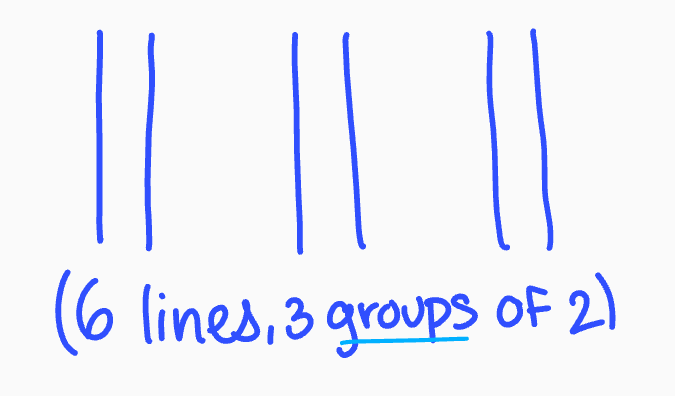
43
New cards
Continuity
Seeing smooth contiguous patterns
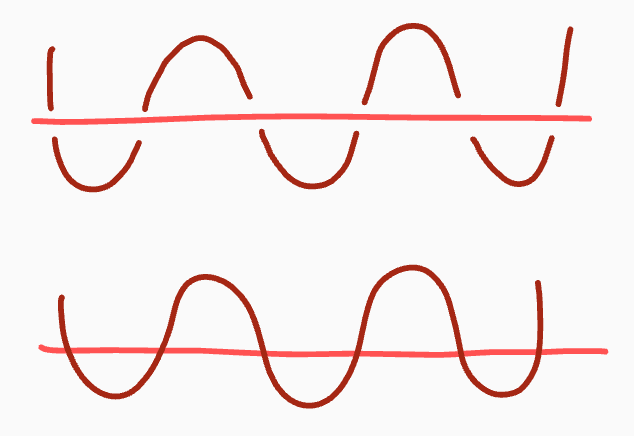
44
New cards
Closure
Neker cube
\
* Fill in the gaps to form a complete picture
\
* Fill in the gaps to form a complete picture
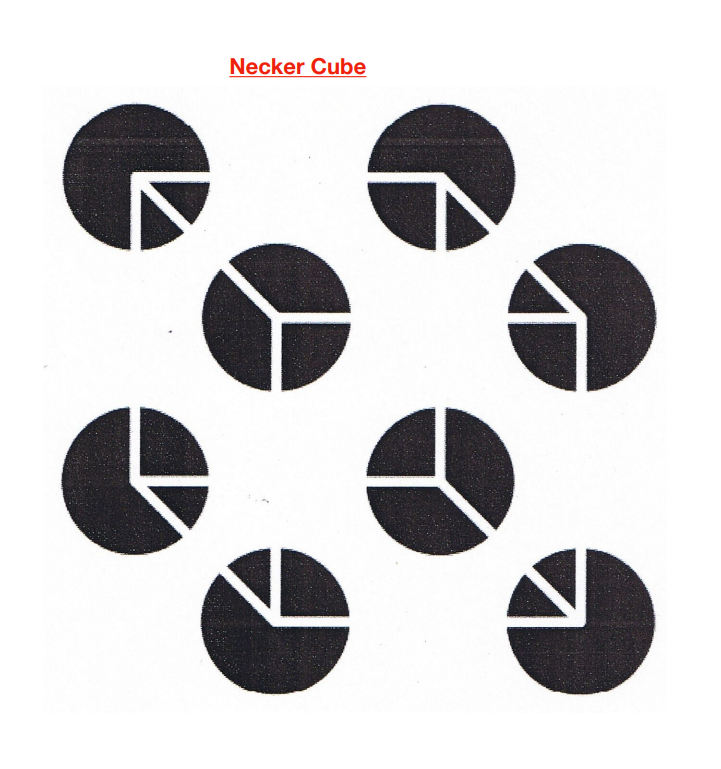
45
New cards
Gesalt: Figure ground
Organizing the visual field into objects that stand out from a background
46
New cards
Monocular cue
Using context to judge distance
47
New cards
Depth perception
See in 3D
* Images on retina are 2D
* Images on retina are 2D
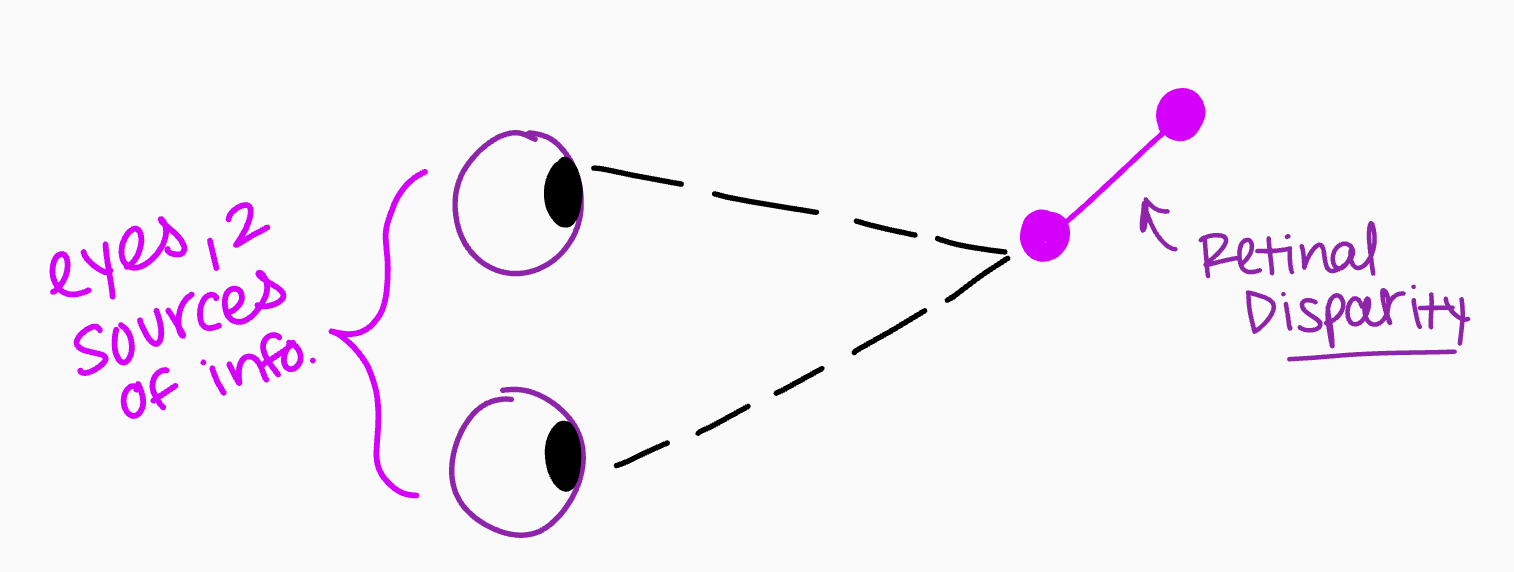
48
New cards
Bionocular cue
Depth cues that come from 2 eyes
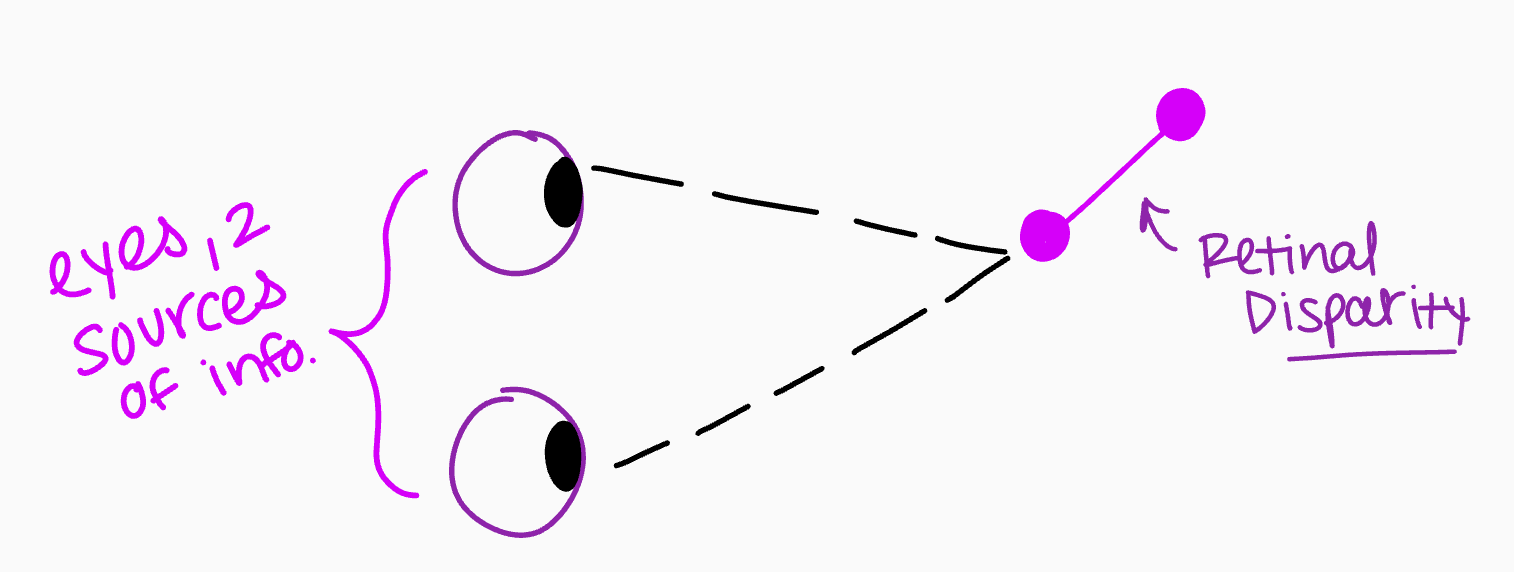
49
New cards
Audition
The sense or act of hearing
50
New cards
Amplitude
Determines loudness
* The height of sound waves
* Taller = louder
* The height of sound waves
* Taller = louder
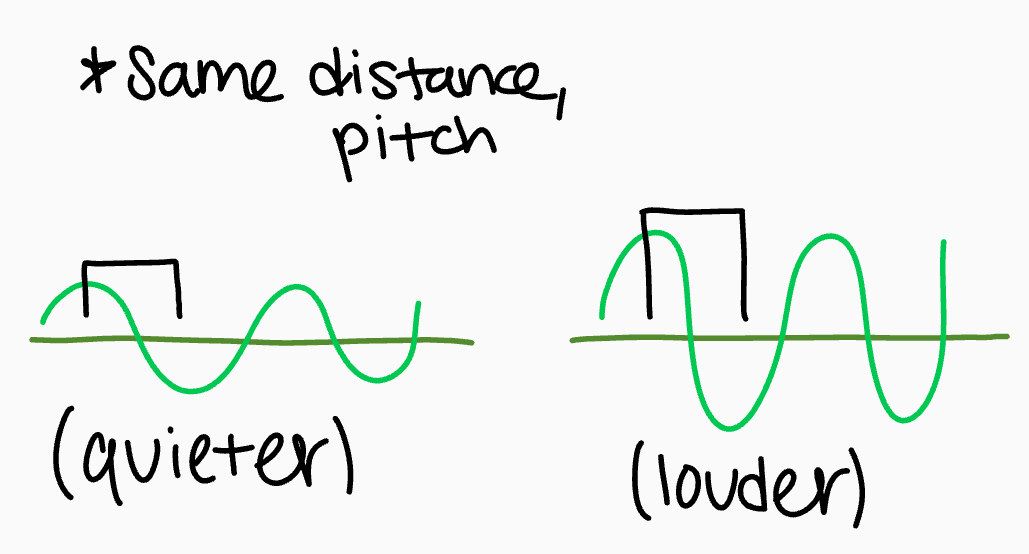
51
New cards
Frequency
Distance from peak valley (horizontally)
* The range of sound pitch, measured in Hertz (Hz)
* The more frequent the sound waves, the higher the pitch, and the higher the Hertz number.
* The range of sound pitch, measured in Hertz (Hz)
* The more frequent the sound waves, the higher the pitch, and the higher the Hertz number.
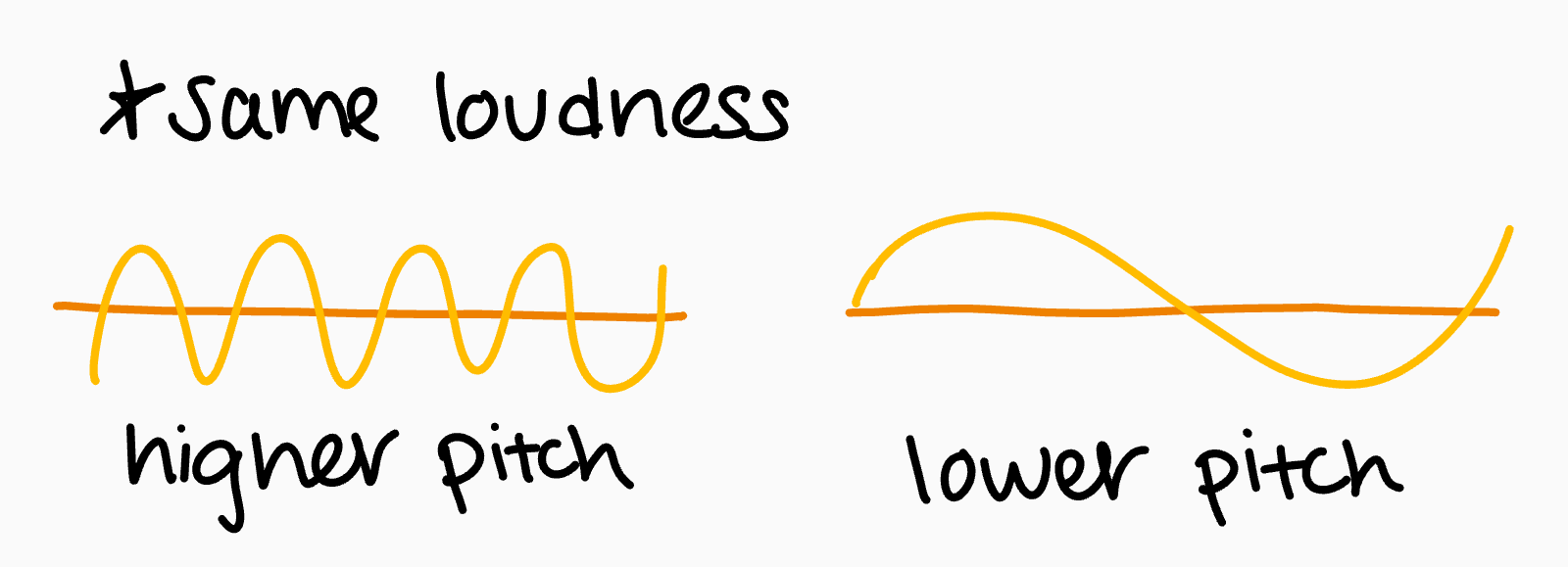
52
New cards
Pitch
Highness or lowness of a sound
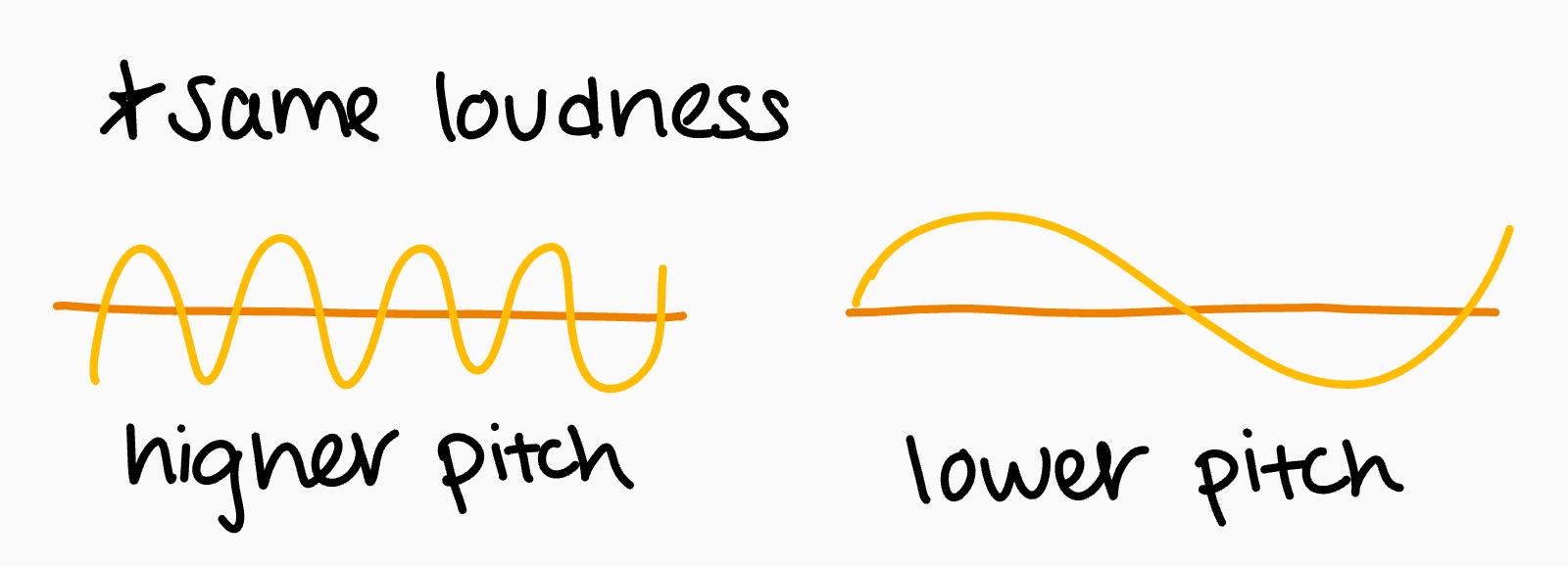
53
New cards
Place theory
The place in the cochlea affects/determines pitch
\
(Pitch is determined by the places where the membrane vibrates, based on frequencies.)
\
(Pitch is determined by the places where the membrane vibrates, based on frequencies.)
54
New cards
Frequency theory
Rate of neural impulse determines pitch
55
New cards
Decibel (dB)
Unit of measure for how loud a sound is
56
New cards
0 decibels
Quietest sound a person can detect (threshold)
57
New cards
Decibels examples
Normal conversation is 60 decibels
* Each decibel represents a 10 times increase in loudness
* A whisper = 20 decibels (10,000 times louder)
* 90 decibels and above causes hearing loss (so traffic)
* Things like a rock concert are 130 decibels
* Each decibel represents a 10 times increase in loudness
* A whisper = 20 decibels (10,000 times louder)
* 90 decibels and above causes hearing loss (so traffic)
* Things like a rock concert are 130 decibels
58
New cards
The EAR (reference worksheet for labels)
A: Outer ear (visible and auditory cortex)
B: Middle ear (between ear drums and cochlea)
C: Inner ear (cochlea, 3 bones)
D: Auditory canal
E and K: Eardrum (this is next to bones)
F (and others): 3 bones of the middle ear including Hammer (J), Anvil (L), Stirrup (M)
I and O: Oval window
H and N: Cochlea on diagram pt.2
G and R: Auditory nerve
P: Fluid in ear
Q: Balisar membrane
S: Hair cells
B: Middle ear (between ear drums and cochlea)
C: Inner ear (cochlea, 3 bones)
D: Auditory canal
E and K: Eardrum (this is next to bones)
F (and others): 3 bones of the middle ear including Hammer (J), Anvil (L), Stirrup (M)
I and O: Oval window
H and N: Cochlea on diagram pt.2
G and R: Auditory nerve
P: Fluid in ear
Q: Balisar membrane
S: Hair cells
59
New cards
Cochlea
Spinal boney structure that is filled with fluid
\
(kinda looks like a sea shell)
\
(kinda looks like a sea shell)
60
New cards
Steps of hearing
1\.) Sound is made
2\.) Sound waves enter ear and auditory canal
3\.) The sound hits the ear drum and makes it vibrate
4\.) The ear drum makes the hammer bone vibrate and those vibrations hit the anvil bone
5\.) When the anvil bone is hit, it vibrates and moves the stirrup bone over to the oval window
6\.) The stirrup hitting the oval window makes waves in the cochlea’s fluid
7\.) Hair cells in the cochlea move with waves in the fluid
8\.) Neural response travels down auditory nerve to the temporal lobe (auditory cortex)
2\.) Sound waves enter ear and auditory canal
3\.) The sound hits the ear drum and makes it vibrate
4\.) The ear drum makes the hammer bone vibrate and those vibrations hit the anvil bone
5\.) When the anvil bone is hit, it vibrates and moves the stirrup bone over to the oval window
6\.) The stirrup hitting the oval window makes waves in the cochlea’s fluid
7\.) Hair cells in the cochlea move with waves in the fluid
8\.) Neural response travels down auditory nerve to the temporal lobe (auditory cortex)
61
New cards
Loudness
Is recognized by the number of hair cells moving
62
New cards
Sensoneural hearing loss
Caused by damage to the cochlea hearing receptors (hair cells)
63
New cards
Conduction hearing loss
Damage to mechanical components (3 bones in the ear)
64
New cards
Cochlear implant
Electrical stimulation of cochlea (to regain hearing ability)
65
New cards
Touch
Skin can detect the following stimuli;
* Pressure, temperature (hot and cold), and pain
* Pressure, temperature (hot and cold), and pain
66
New cards
Pain
Women tend to be more sensitive to pain than men (they pick up on it better)
* Every person’s pain sensitivity and tolerance is different, and determined by 3 factors:
* Biological: Endorphin production, activity in the spinal cord
* Psychological: Attention to pain, expectations and experiences
* Socio-cultural: Cultural expectation, the presence of others
* Every person’s pain sensitivity and tolerance is different, and determined by 3 factors:
* Biological: Endorphin production, activity in the spinal cord
* Psychological: Attention to pain, expectations and experiences
* Socio-cultural: Cultural expectation, the presence of others
67
New cards
Since pain is both physical and psychological we can treat it with
* Drugs, surgery, massages, placebo, hypnosis, relaxation therapy (meditation)
68
New cards
Taste
Purpose is to detect poison, and get nutrition
5 flavors;
* Sweet (sugar)
* Salty (salt)
* Bitter (coffee)
* Sour (lemon)
* Umami (savory, like mushrooms)
\
Taste is a chemical sense,
* Each bump on your tongue has more than 200 taste buds
* Each taste bud has between 50 and 100 receptors
* Each receptor is uniquely tailored to one of the 5 flavors
* Taste buds replace themselves every week or 2
5 flavors;
* Sweet (sugar)
* Salty (salt)
* Bitter (coffee)
* Sour (lemon)
* Umami (savory, like mushrooms)
\
Taste is a chemical sense,
* Each bump on your tongue has more than 200 taste buds
* Each taste bud has between 50 and 100 receptors
* Each receptor is uniquely tailored to one of the 5 flavors
* Taste buds replace themselves every week or 2
69
New cards
Smell
\*Attractiveness, it’s learned
\
Also a chemical sense;
* 20 mm olfactory receptors in the nasal cavity
* Goes to the “olfactory bulb” not through the thalamus because it is a much older sense, to detect food
* Memory center next to olfactory bulb, so smell triggers memory unlike any other sense. This also means it could trigger harmful memories, trauma related stuff
\
Also a chemical sense;
* 20 mm olfactory receptors in the nasal cavity
* Goes to the “olfactory bulb” not through the thalamus because it is a much older sense, to detect food
* Memory center next to olfactory bulb, so smell triggers memory unlike any other sense. This also means it could trigger harmful memories, trauma related stuff
70
New cards
Olfactory bulb
A rounded mass of tissue that contains several types of nerve cells that are involved in the sense of smell.
* There are two olfactory bulbs on the bottom side of the brain, one above each nasal cavity.
* There are two olfactory bulbs on the bottom side of the brain, one above each nasal cavity.
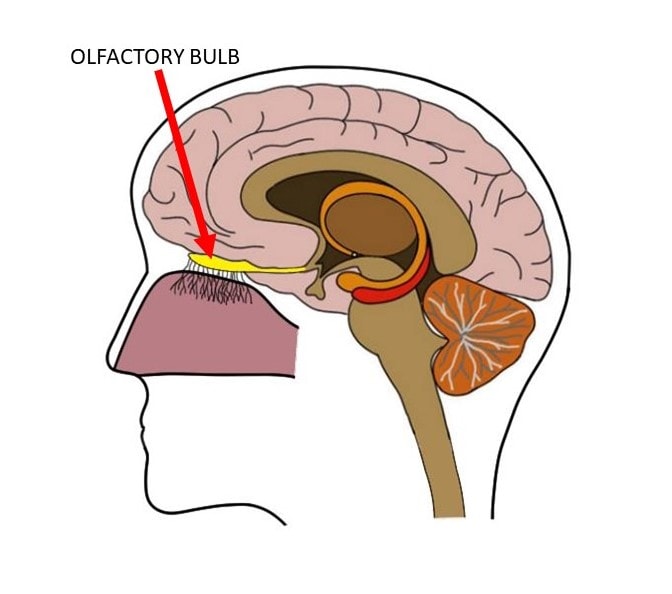
71
New cards
Kinesthesia
The system for sensing position and movement of individual body parts (sensors all over the body)
72
New cards
Vestibular sense
Sense of body position and balance
* Vestibular sacs are in the cochlea
This is in relation to the ears, which is why your balance may be messed up depending on how your head is turned (upside down)
This is also why vertigo messes stuff up
* Vestibular sacs are in the cochlea
This is in relation to the ears, which is why your balance may be messed up depending on how your head is turned (upside down)
This is also why vertigo messes stuff up